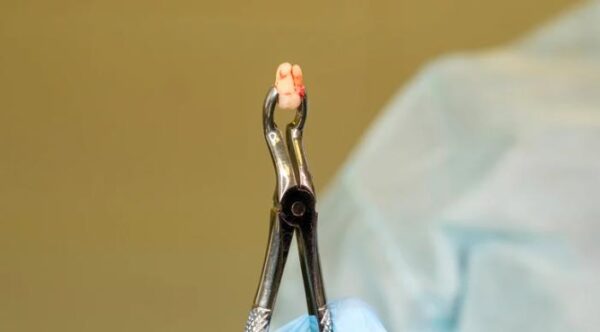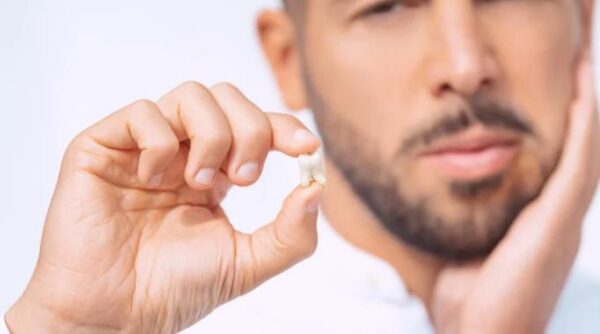Are you eager to hit the gym or go for a run after a tooth extraction but unsure when it’s safe to break a sweat? We’ve got you covered! Understanding the delicate balance between exercise and oral health is key to a smooth recovery. Regarding the question of “exercise after tooth extraction how long should you wait,” it’s generally advised to pause any strenuous physical activities for at least 24 to 48 hours post-procedure. Let’s dive into how long you should wait before getting back into your fitness routine post-tooth extraction to ensure you don’t compromise your healing process.
Understanding Tooth Extraction
When it comes to tooth extraction, envision a delicate process where a tooth bids farewell to its cozy socket in the bone. This routine dental procedure is often sought to relieve pain or address underlying dental concerns. By delicately removing the tooth, dentists pave the way for healing and improved oral health.

Post-extraction care involves following your dentist’s instructions diligently. From applying ice packs to minimize swelling to steering clear of troublesome foods that could disturb the site, every step plays a crucial role in promoting proper healing post-procedure. Your body needs this time to recuperate and regain its strength.
Allowing your body ample time for recovery ensures a smooth transition back to normalcy after the extraction experience. Embrace this period as an opportunity for self-care and rejuvenation, setting the stage for optimal healing outcomes in the days ahead.
Immediate Post-Extraction Care
After undergoing a tooth extraction, your dental care doesn’t end in the dentist’s chair. The immediate post-extraction period is crucial for ensuring proper healing and minimizing discomfort. Your dentist will provide you with personalized instructions to follow diligently.
One common recommendation is to apply ice packs to the outside of your face near the extraction site. This helps reduce swelling and provides relief from any pain or tenderness you may experience.
Taking any prescribed pain medication as directed can also aid in managing discomfort during this initial phase. It’s important to adhere to the dosage and timing recommended by your dentist for optimal pain relief.
Additionally, paying attention to your diet is essential post-extraction. Avoiding hard, crunchy foods that could irritate the extraction site is key to preventing complications and promoting healing. Opt for softer options that are gentle on your mouth while it recovers from the procedure.
Impact of Exercise on Healing
Engaging in physical activity is crucial for our well-being, but it’s essential to understand how exercise can impact the healing process after a tooth extraction. Strenuous activities too soon post-extraction can disrupt the delicate balance needed for proper healing. The increased blood flow and pressure from vigorous exercise may pose risks such as bleeding or dislodging of the blood clot that forms in the extraction site.
Allowing your body to rest and recover during the initial recovery phase is key to ensuring a smooth healing process. By giving yourself time to heal before jumping back into intense workouts, you’re minimizing potential complications and promoting optimal recovery. Remember, listening to your body’s signals and following your dentist’s guidance on when it’s safe to resume exercise are vital steps in supporting your overall health post-tooth extraction.
Factors Affecting Exercise After Tooth Extraction
 The decision to resume exercise after a tooth extraction is influenced by various factors. The complexity of the extraction procedure plays a significant role in determining how soon you can safely engage in physical activity. Additionally, your overall health and any potential complications during recovery need to be considered before jumping back into your workout routine.
The decision to resume exercise after a tooth extraction is influenced by various factors. The complexity of the extraction procedure plays a significant role in determining how soon you can safely engage in physical activity. Additionally, your overall health and any potential complications during recovery need to be considered before jumping back into your workout routine.
Your body’s ability to heal effectively post-extraction is crucial in deciding when it’s appropriate to start exercising again. Each individual may experience a different recovery timeline based on their unique circumstances. Therefore, it’s important to be patient and attentive to your body’s signals as you navigate the post-extraction period.
Can I Workout After a Tooth Extraction?
No, it is generally recommended to avoid working out immediately after a tooth extraction. It’s usually advised to wait at least 24-48 hours before resuming any exercise
Can I Go for a Run After Tooth Extraction?
It’s generally recommended to avoid strenuous physical activities like running for at least 24 to 48 hours after a tooth extraction. This precaution helps prevent complications such as bleeding, increased swelling, and the dislodgement of the blood clot that forms in the extraction site, which is crucial for healing.
How Long Should You Wait to Exercise After Tooth Extraction?
Most common question you questioned yourself after tooth removal is when can I exercise after tooth extraction?. After a tooth extraction, giving your body time to heal is key before hitting the gym or going for a run. Most dentists recommend waiting 24 to 48 hours post-extraction before resuming strenuous exercise. This initial recovery period is crucial for allowing your mouth to recover properly.
During those first couple of days, focus on rest and relaxation. Your body needs time to recuperate after the procedure. It’s essential not to rush back into intense workouts too soon; instead, listen to your body and give it the care it needs.
Once you’ve navigated through this initial phase, you can slowly reintroduce exercise into your routine. Start with gentle activities like walking or light stretching. Gradually increase the intensity as your body adjusts and tolerates the physical exertion.
Types of Exercise to Avoid
Physical activity is crucial for overall health, even during the recovery phase after a tooth extraction. However, it’s essential to choose exercises wisely to support healing and prevent complications. Avoid activities that exert excessive pressure on your body, such as heavy lifting or intense workouts that could disrupt the healing process. Opt for gentler movements like walking, joining yoga class, or light stretching to maintain mobility without risking discomfort at the extraction site. By selecting low-impact exercises, you can promote circulation and flexibility without compromising your recovery. Listen to your body’s signals and adjust your exercise routine accordingly to ensure a smooth healing journey post-tooth extraction.
Signs That You’re Ready to Resume Exercise

As your body heals post-tooth extraction, tuning in to its signals is key. Notice any decrease in swelling and discomfort around the extraction site. Feeling less pain and tenderness is a positive sign that you may be ready to incorporate exercise back into your routine.
Another indicator to watch for is an uptick in your overall energy levels. If you find yourself feeling more energized and less fatigued as the days pass, it could be a green light to start easing back into physical activity.
Moreover, obtaining clearance from your dentist or oral surgeon is crucial before resuming exercise. Their expertise can provide valuable insight into whether your body has sufficiently healed from the extraction procedure.
Tips for Exercising Safely After Tooth Extraction
When it comes to exercising after a tooth extraction, safety should be your top priority. Listen to your body and start slowly – there’s no rush. Hydration is key, so remember to drink plenty of water before, during, and after your workout. If you feel any pain or discomfort, don’t push through it; instead, take a break and allow your body to rest.
Avoid activities that require intense bending or straining, as they can potentially impact the healing process of the extraction site. Opt for low-impact exercises like walking or gentle stretching to ease back into physical activity without risking complications.
By being mindful of your body’s signals and taking things at a comfortable pace, you can gradually reintroduce exercise post-tooth extraction while prioritizing your recovery. Stay cautious, stay hydrated, and always prioritize your well-being above all else when getting back into your fitness routine after dental work.
Consulting Your Dentist Before Resuming Exercise
Before you jump back into your favorite workout routine, taking a moment to consult with your dentist or oral surgeon can make a significant difference in your recovery process. These professionals have the expertise to evaluate your unique situation and provide personalized guidance on when it’s safe to resume exercise post-tooth extraction.
By seeking their advice, you’ll ensure that you’re on track towards a smooth and successful recovery. Your dentist can offer valuable insights tailored to your specific needs, helping you navigate the delicate balance between staying active and allowing your body the necessary time to heal.
Long-Term Dental Health and Exercise

Long-term dental health goes hand in hand with regular exercise and proper oral hygiene practices. While hitting the gym or going for a run is crucial for your overall well-being, don’t overlook the significance of caring for your teeth and gums. Just as you prioritize fitness goals, make sure to schedule those routine dental check-ups to maintain a healthy smile that complements your active lifestyle.
Exercise may boost your physical strength and stamina, but it’s equally vital to brush and floss daily to keep cavities and gum disease at bay. Don’t let those pearly whites take a backseat amidst your workout regimen – they deserve attention too! Remember, a radiant smile is not just about aesthetics; it reflects your dedication to holistic health inside out.
FAQs
1. Is it OK to walk around after tooth extraction?
Absolutely! Walking around gently after a tooth extraction can actually be beneficial for promoting blood circulation and reducing the risk of blood clots forming in your legs. However, it’s essential to avoid any strenuous physical activity or heavy lifting for at least 24 to 48 hours post-extraction to allow the blood clot to form and the healing process to begin. Listen to your body, take it easy, and if you experience any discomfort, be sure to rest.
2. Should I exercise my jaw after tooth extraction?
Yes, gentle jaw exercises or facial yoga can help improve blood flow to the area and promote healing after tooth extraction. However, it’s crucial to be mindful of your comfort level and not overdo it. Start with simple, gentle movements such as opening and closing your mouth slowly, moving your jaw from side to side, and gently stretching the muscles. Avoid any strenuous chewing or jaw exercises that could put undue pressure on the extraction site. As always, consult with your dentist for personalized guidance on post-extraction care.

